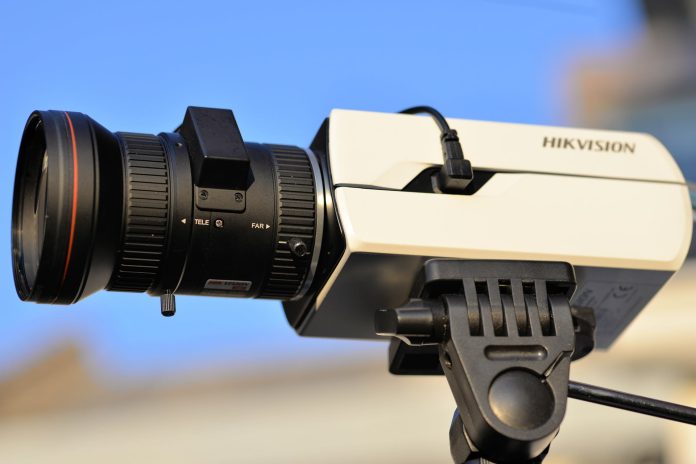Contents
Overview
| Price: | AUD 810 |
| Subscription Fees: | No Fees |
| Setup: | Networking knowledge and support are available. |
| Resolution: | Darkfighter camera is 1080p 2MP |
| Dimensions: | 110mm long, with a 65mm diameter at the lens and a 54mm diameter at the mount. Weigh 476 grams |
| Hikvision Darkeye SLA Lens Specifications: | 7-33mm focal length, F0.95 Aperture, Weight is 476, Needs a housing. |
| Key Characteristics: | Sharp, big focal range, excellent in low light, IR correction. |
Hikvision Darkeye SLA Amazing Camera
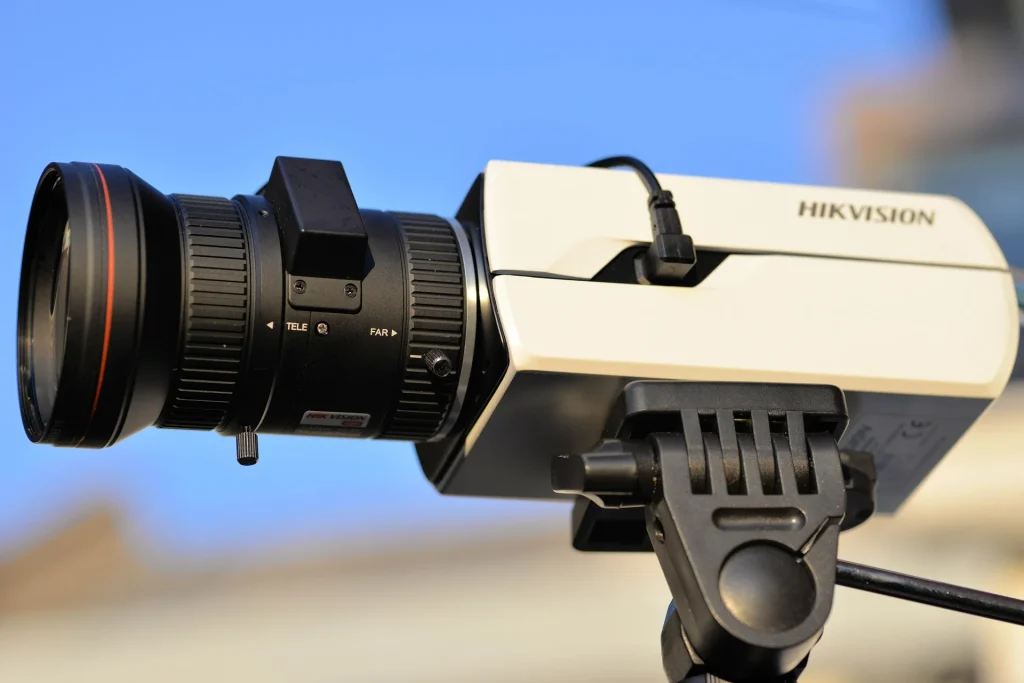
We tested Hikvision Darkfighter in SEN a while back but post-SecTech Roadshow, I jumped at the chance to re-test the camera with Hikvision’s new Darkeye SLA lens.
Hikvision Darkeye SLA Lens
Hikvision DarkEye SLA lens – When you’re a lens junkie, a piece of glass like Hikvision’s Darkeye represents something mysterious and wonderful. At once it’s a lens capable of snaring the best possible performance from the camera wearing it and the answer to a prayer that lens quality will stop its slide to the abyssal plains of low cost. When it comes to lenses, you get what you pay for. In the case of Darkeye, you pay for what you get – it’s $A810 list, so this is an application-specific lens.
Perhaps I should confess to a conflict of interest at this point. I own about 20 manual lenses – primes and zooms – and am enslaved to the metallic syrup of manual zoom and focus. This passion makes it difficult to be objective about Hikvision DarkEye SLA, which looks like the love child of Sigma’s warm 17-50 Ex HSM DX zoom and Nikon’s slightly soft but gloriously colourful 25-50 AI-S reporter.
Hikvision’s SMART technologies
In the engine room for this test is Hikvision’s Darkfighter DS-2CD6020FHWD(-A), distributed locally by Central Security Distribution and Ingram Micro, Darkfighter has a 2MP ½-inch progressive scan CMOS sensor and dishes up 60fps, 120dB of WDR, and 3D DNR digital noise reduction among a lot of other cool stuff. This includes Hikvision’s SMART technologies, which include face detection, intrusion detection, line-crossing detection and object counting, on-board ANPR analytics, Smart Defog and EIS (electronic image stabilization).
Last test we rotated Hikvision’s 3.8-16mm F1.5 – an 8MP IR-corrected 1/1.8-inch (9.2mm) lens – with Hikvision’s 11-40mm @F1.5 1/1.8-inch 8MP IR-corrected lens. Both were nice lenses, the 11-40 was the better performer optically in my opinion but comparing wide angles to longer focal lengths is nigh on impossible. While these 2 lenses were strong in their own right, the f/0.95 Darkeye is a beast of another stripe.
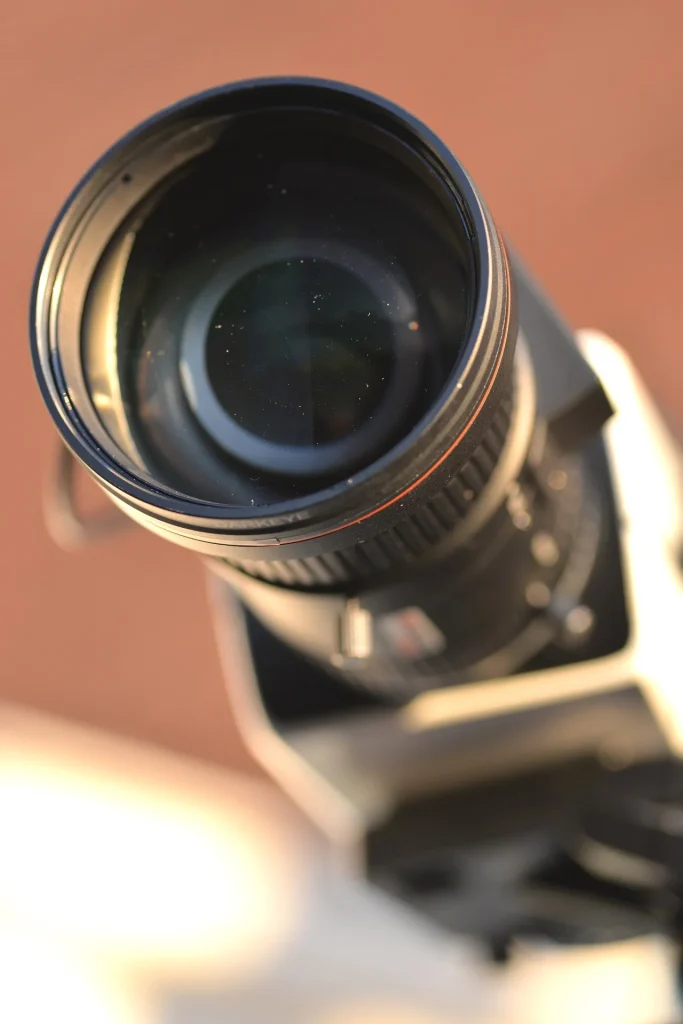
Hikvision DarkEye SLA-IR Performance
Hikvision DarkEye SLA (for super large aperture) features IR correction and up to 6MP resolution. But the big deal is that gaping aperture – it’s a consistent f/0.95 across the Darkeye’s massive 7-33mm focal length. What this means is that Darkeye gives its best low light performance at any zoom setting. Usually, when you zoom you lose aperture as focal length increases. The lens slows down and as aperture closes, shutter speed must be adjusted and blur increases, or ISO must be elevated and noise increases. Constant aperture is a feature of the best professional zoom lenses but it’s an unusual feature for a CCTV lens.
Of course, super fast lenses have their foibles – they have shallower depths of field and can be more vulnerable to strong backlight than their pedestrian stable mates. DoF and WDR performance are 2 qualities I’m particularly interested to see with Darkfighter wearing Darkeye – the wide angle is likely to protect depth of field to some extent. Given the immutability of the laws of physics, it will be interesting to see if this combination has what it takes for real world applications.
In the hand, Hikvision DarkEye SLA is a lovely lump. Dimensions are 110mm long, with a 65mm diameter at the lens and a 54mm diameter at the mount. Weight is 476 grams, which is not surprising. The chassis of the barrel seems to be metal, the rear mount is all metal (a solid metal disk about 5mm thick, not a skimpy plate), and everything else is heavy poly, including the zoom and focus grips.
Examining the build under a loupe of Hikvision DarkEye SLA, it even looks like the screws in the barrel are weather sealed. The zoom function is internal and seems to be a spiral mechanism, the internals feel like high quality poly but that’s a guess based on touch.
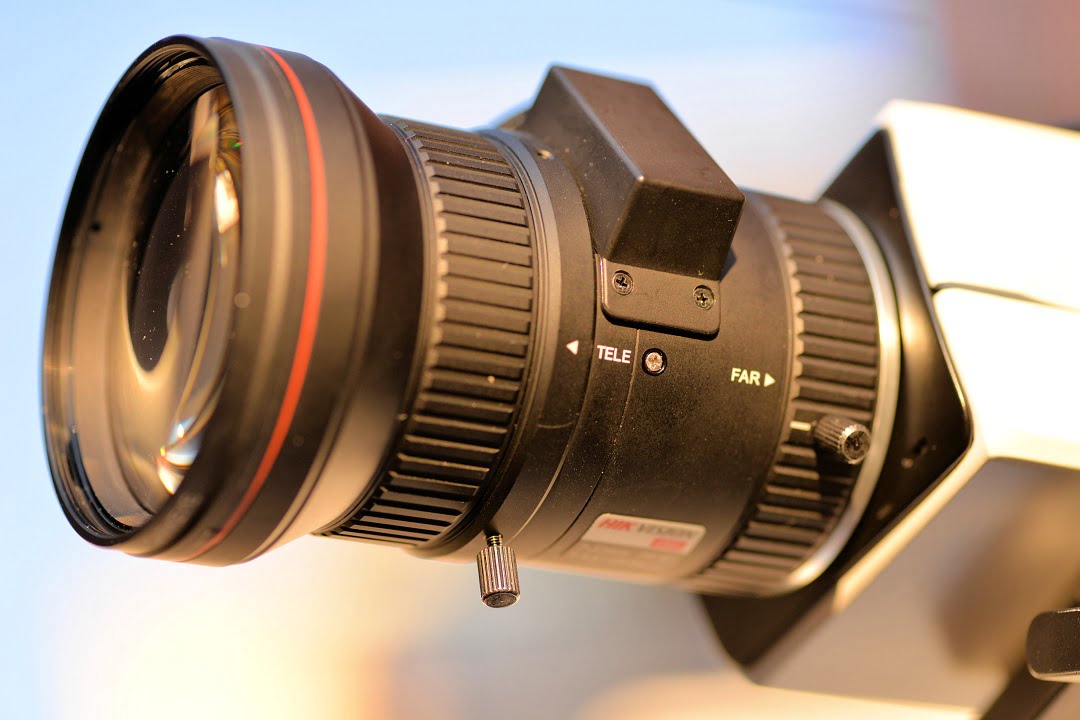
Coatings are difficult to call – there must be coatings on a lens this fast but there’s no reflection off the front element. Hikvision DarkEye SLA-The application of coatings is apparent by the wavelengths of light they reflect – usually green or red with Magnesium Fluoride coatings targeting the centre of the visible spectrum. It’s possible Darkeye is multi-coated against wavelengths in addition to 550nm. In such cases, the front element tends to gray or black but I’m not sure looking at Hikvision DarkEye SLA. The element looks clear in some light and almost photochromatic at other times. A bench test is likely to tell us more because a lens this fast with no coatings will show rampant flare.
Hikvision DarkEye SLA-WDR
Our test bed is SEN’s dedicated Dell 9020 i7 workstation and in this case we are running Hikvision’s iVMS-4200 software. You drill into camera configuration through device management in the control panel and once you’re inside, are presented with as complete a group of functions as you could hope for. I undertake the test on Hikvision DarkEye SLA in a few stages – the first is all about low light so I leave WDR off. The following day I head outside into full sun with WDR on.
Setting up, I leave day/night on auto and elevate contrast and sharpness to 60 per cent and leave saturation and brightness at 50 per cent. I try elevating brightness but don’t like the intensity of the colour, even at 55 per cent. Default is good. I note the camera’s gain slider is locked at 100 per cent. White balance is set to AWB2 and I leave it there. Iris is on auto, exposure time is at 1/25 (40000us), digital noise reduction is in normal mode and the slider is at 50 per cent. Bitrate is fixed at 4Mbps and backlight, defog and electronic image stabilisation are all off.
Tweaking focal length and focus
Hikvision DarkEye SLA Lens-Tweaking focal length and focus, I notice there’s a little latency between real time actions and the screen – this must be a feature of the camera as SEN’s dedicated Dell setup is doing no other work. There’s nothing challenging about this once you’ve adjusted for it, though I notice the latency with live video as well that’s slightly more than I usually see.
I begin my test in the late afternoon with WDR off. I don’t want the processor doing any unrelated work and application of WDR can cause smoothing and swim in an image, making it look overwrought. I take a reference shot of the heavily textured district view out the back. As you’d expect, with WDR off and 75,000 lux of direct sunlight, colours are muted and there are signs of over-exposure but it’s a very detailed image, despite this.
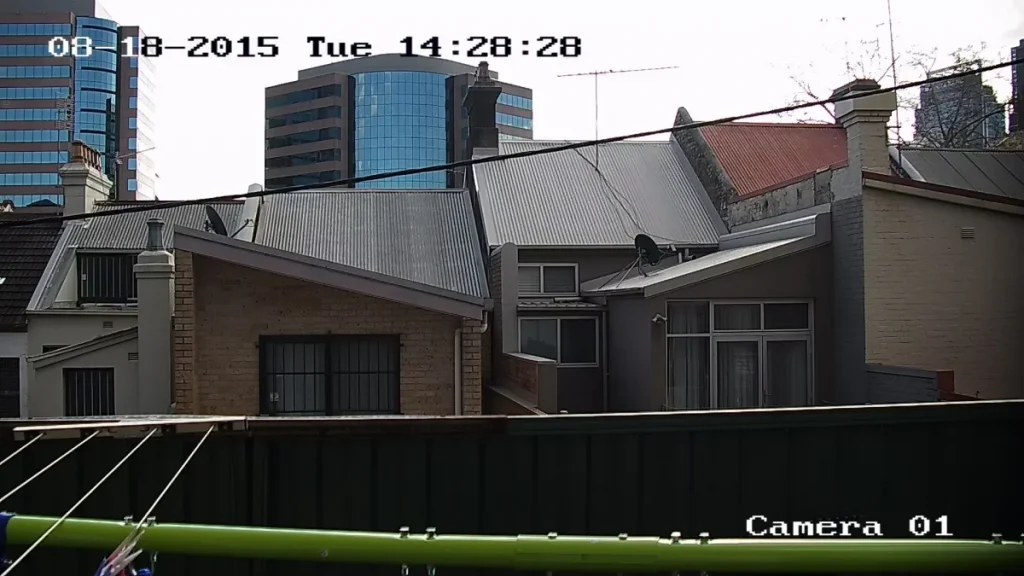
But my interest is in the lane and as the sun starts to soften around 4pm, I tip Darkfighter’s snout downwards and to the right. Something to note upfront is the angle of view. I’m at the widest setting of 7mm, which proves to be very useful for street scenes like this. It’s seldom, in my opinion, that a user actually requires the monstrous wide angle views offered by many low cost camera lenses. Installed in default at the widest setting these simply present users with considerable barrel distortion, lashings of CA and a detail robbing pixel spread.
At 7mm with WDR off and around 5000 lux at the lens, Darkfighter is very happy. I have images from my original test on-hand to compare and differences in field of view notwithstanding, there are definite improvements in colour rendition. Hikvision DarkEye SLA Lens is a warm lens on Darkfighter. There’s a complete absence of notable barrel distortion and there’s no chromatic aberration in this scene. Detail and texture are very good thanks to the sharpness of the lens.

Even taking into account the longer focal length of this lens, the image seems more 3-dimensional to my eye. I was expecting to be able to ascertain depth of field by eye – to see the sweet spot on-screen but I can’t. I am not at infinity – I dialled in a focal point of about 15m for this test – and there is a more distinct point at which the texture in the scene goes out of focus in the distance. This relates to the fast aperture and the focal length of the lens, in my opinion.
Hikvision DarkEye SLA-Motion Blur
I’m looking out for motion blur and am immediately impressed by the lack but most of all I notice the level of detail. It’s the golden hour in Sydney and as we’ve observed before, as light levels drop, detail increases with IP CCTV cameras. That’s definitely the case here. Darkfighter with Darkeye is giving me the most detailed 1080p camera view of the lane I’ve ever had. Since testing DVTel’s 4K Quasar I’ve been hungry for resolution and this camera and lens combination is impressing me. It’s not 4K, but it’s not typical 1080p HD, either.
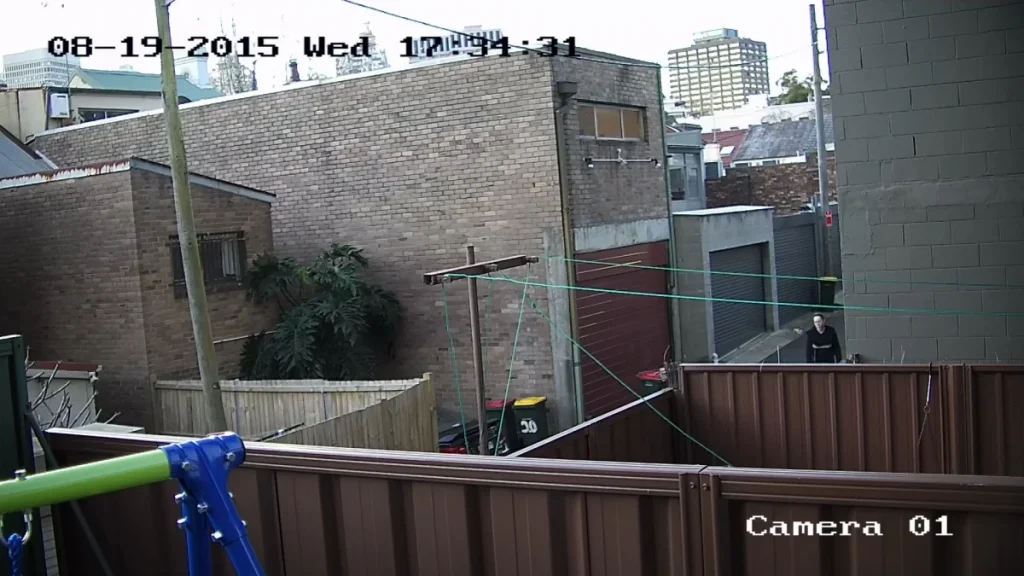
As I’m watching, a couple of people come down the lane about 12m from the lens and I snatch a shot. Looking at it later they are clearly identifiable – blur factor, zero. At about 430pm a tall, yellow ghost stands up in the lens – the setting sun at an acute angle to the lens is the culprit and when the sun disappears at 5.03, the ghost leaves with it. At 530, colours are muted but the light levels on the monitor are starting to lose all relationship with observable light. The monitor still looks bright.
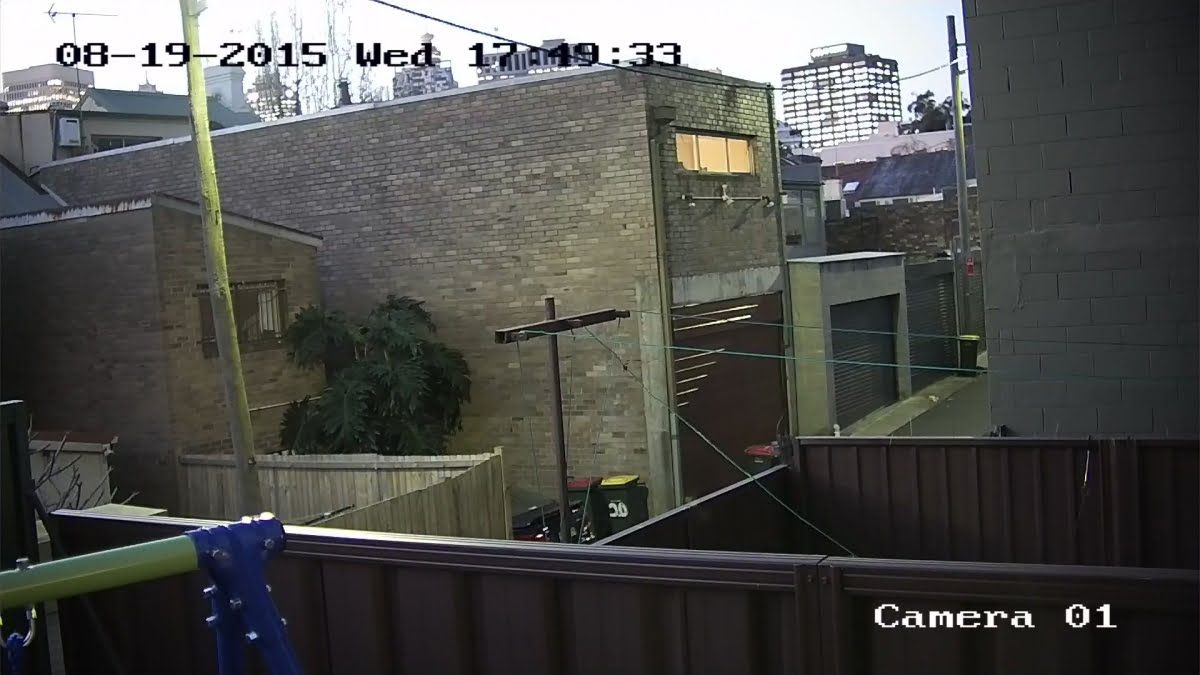
A car comes down the lane and then a person walking and again I note the lack of motion blur and license plate and face recognition. From 530pm onwards, Darkfighter and Darkeye start to mambo – it’s first noticeable in light coming from a small internal lamp in a room at about 15m from the lens that I cannot discern with the naked eye. At 5.43 I measure 10 lux at the lens but that low number bears no resemblance to what the camera is bringing to the monitor. Texture has softened but is not lost – this is a high contrast scene. Darkeye’s quality is coming to the fore. There’s detail in this scene I’ve never seen before.
Hikvision DarkEye SLA- Low Light Performance
At 5.54pm we have 4 lux at the lens but apparent light levels are much higher on the monitor. To my eye it’s now dark outside, with some light in the sky but it’s loom, not the blue I see on the monitor. There’s no noticeable swim in this image – that’s the benefit of keeping WDR off, in my opinion. Just for the sake of it, I adjust the field of view to include the streetlight in the lane for a second and oops! There’s the benefit of keeping WDR on! I get considerable darkening of the rest of the scene along with a loss of detail, though things stay consistent and useable.

Hikvision DarkEye SLA- Low light performance. Just after 6pm my Sekonic stops measuring light at the lens and we are under 1 lux but Darkfighter and Darkeye care not a wit. There’s some yellow shift in the image under low pressure sodium but nothing more. There’s loads of detail and texture in the scene, very little noise – it’s as if Darkeye’s monstrous eye socket has unloaded Darkfighter from the task of amplifying the signal, ISO noise and digital smoothing are not to be found in the scene, though I do note blooming around the streetlight.
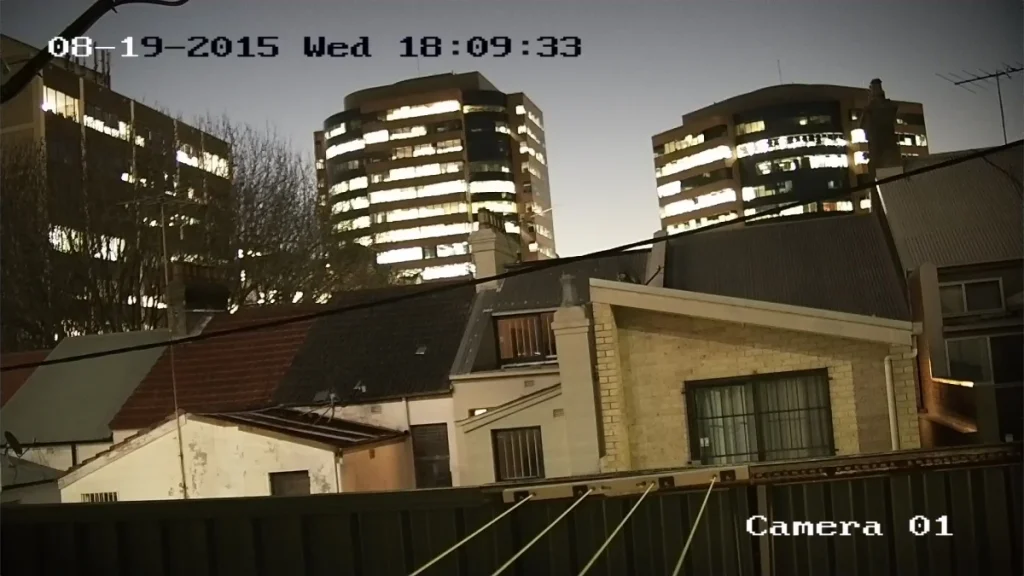
I could be rid of this by turning on WDR but in the interests of keeping the image as true as possible, I resist the temptation. For typical applications with lights, including headlights, in the scene, you might keep WDR on but Hikvision DarkEye SLA Darkfighter performs extremely well set up in this way. My instinct through this part of the test – the dark part of my test – is that I cannot reduce light levels enough to make a proper go of it. This camera is better than the results I obtain here – and in this application it’s the best unsupported low light camera we’ve ever tested.
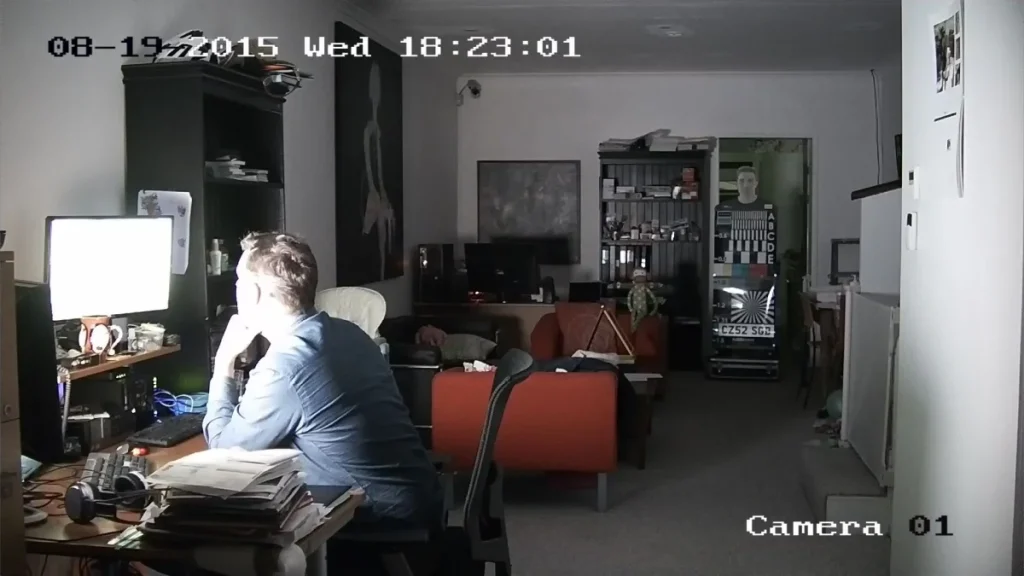
Next, I go out the front of the office but on the way take a single shot with Norman in the scene and 2 monitor screens lighting the office. To my eye it was dark at the end of the office where Norman is located but Darkfighter and Darkeye combine to give face recognition, complete colour rendition, license plate, and delineation of bars on the test chart. Only the A line is beginning to blur, which at 10m and sub 2 lux at the lens and Norman’s face, is excellent performance.
Out the front of the office light levels are between 7 and 4 lux, depending how far I am from the overhead street lights. This is the best image I’ve had out here at 1080p. There’s bags of detail and the scene is very true, though I’m getting blooming around a verandah light over the road with WDR off. By happy chance, a car pulls up and a person hops out and runs off up the street, giving the chance to check blur – it’s extremely low. The person turns at about 22 m from the lens and while I don’t get facial ID, you could confirm the identity of a known person at this range.
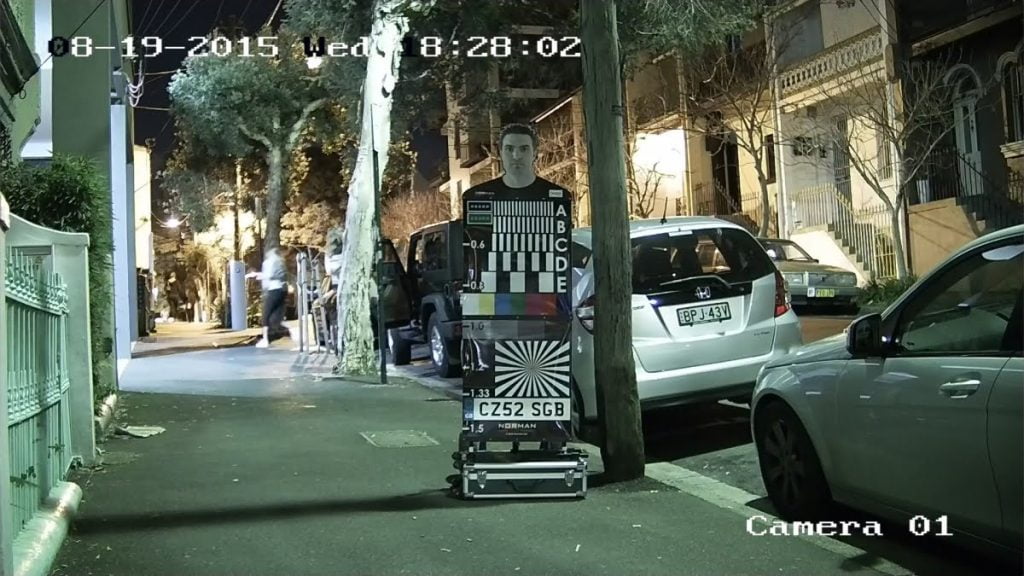
At 7m, Norman is very well rendered and he still looks good at 12m, though I’m getting to the edge of my selected focal point. Face recognition is effortless at 12m at a 7mm focal length. Importantly, I’m not getting too much flare off his face with WDR off – that was a concern of mine. But as soon as I move Norman into the zone of the Yaffa building’s floodlight, there’s a little blooming from light reflecting off his face that I’d prefer not to have.

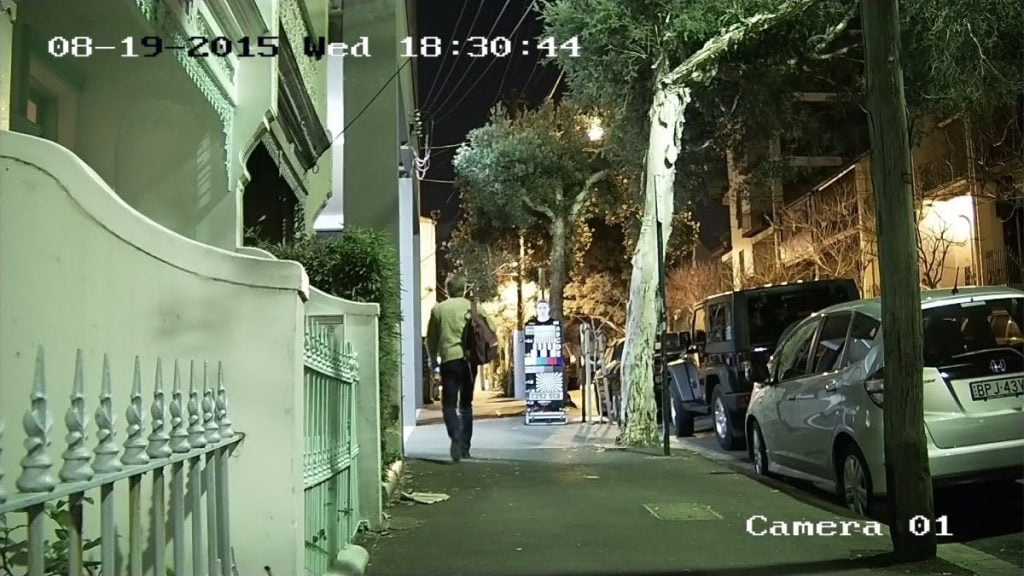
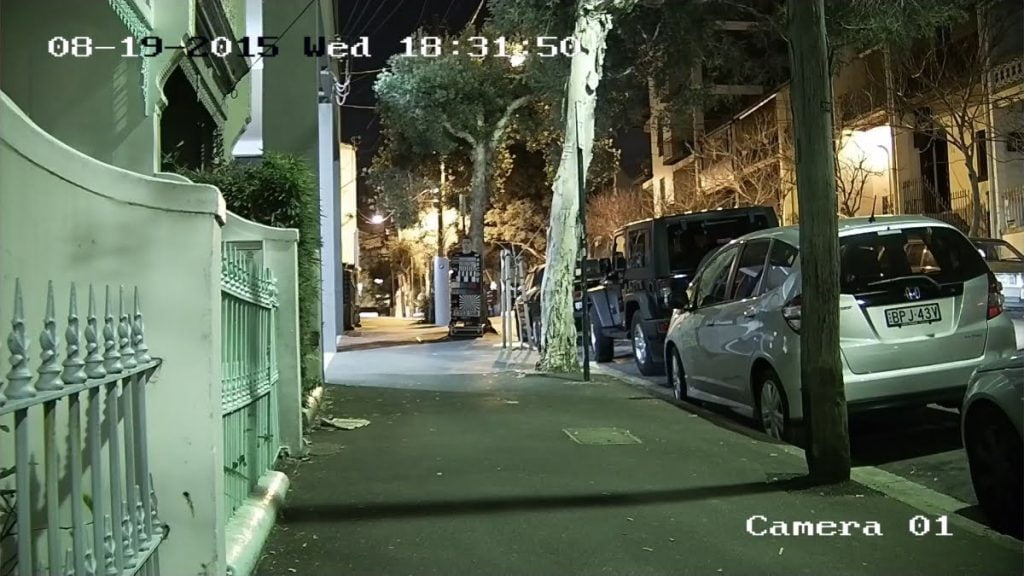
At 22m I put Norman behind a pole shadow in 5 lux. I’m not getting face ID but am getting confirmation of known ID – hair, eye shape, eyebrow ridges, colour rendition is muted now but contrast of bars on the target is distinct from the C line and there’s no problem with license plates whatever. Hikvision DarkEye SLA-Digital zoom is enhanced with Darkeye lens – you still lose resolution as soon as you roll the mouse wheel same as any 1080p camera but the MTF of this lens is so strong that less fine detail can be considerably enhanced without becoming indistinct.
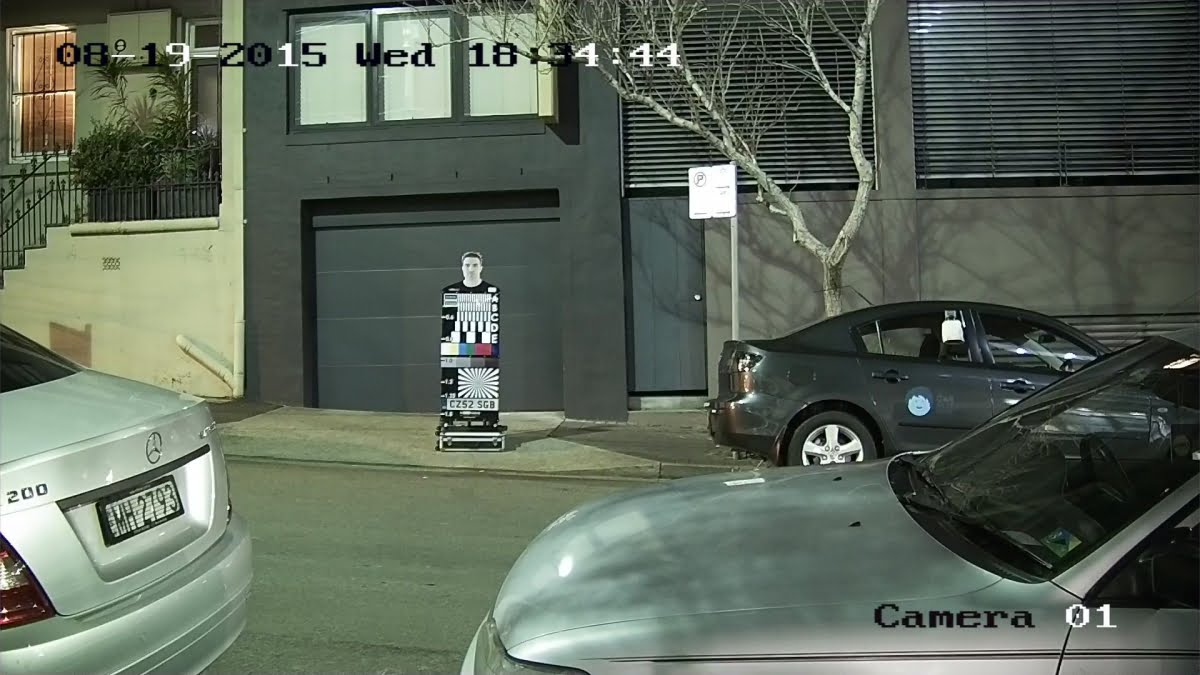
In a vain quest to challenge Darkfighter and Darkeye, I move Norman over the road – the range is probably 12m or so – but no trouble at all. Readers will rightly suggest that 4-7 lux is not so challenging for a good day/night camera. That’s partly but not entirely true. Light at this level challenges cameras and while many fail to handle it well, all handle it differently. Darkfighter is managing extremely well. With WDR off, I’m getting some mild bloom around lights and headlights, but very low motion blur and extremely good colour rendition everywhere. This is a good camera but Hikvision DarkEye SLA takes it to another level.
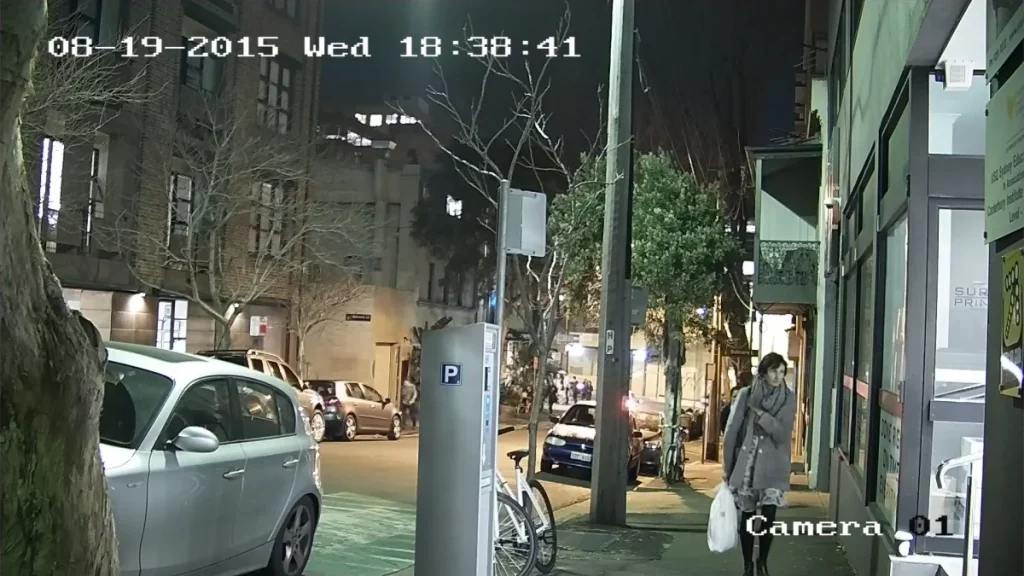
Next day I run a test with WDR on. Before I go out the back I take a shot of Norman at the long end of the focal length – 33mm – to try isolating him from the background with a very shallow depth of field. The lens is at about 3m from the subject and yes, Hikvision DarkEye SLA is a bokeh machine! I also note no blooming around the lights with WDR activated and no chromatic aberration either.
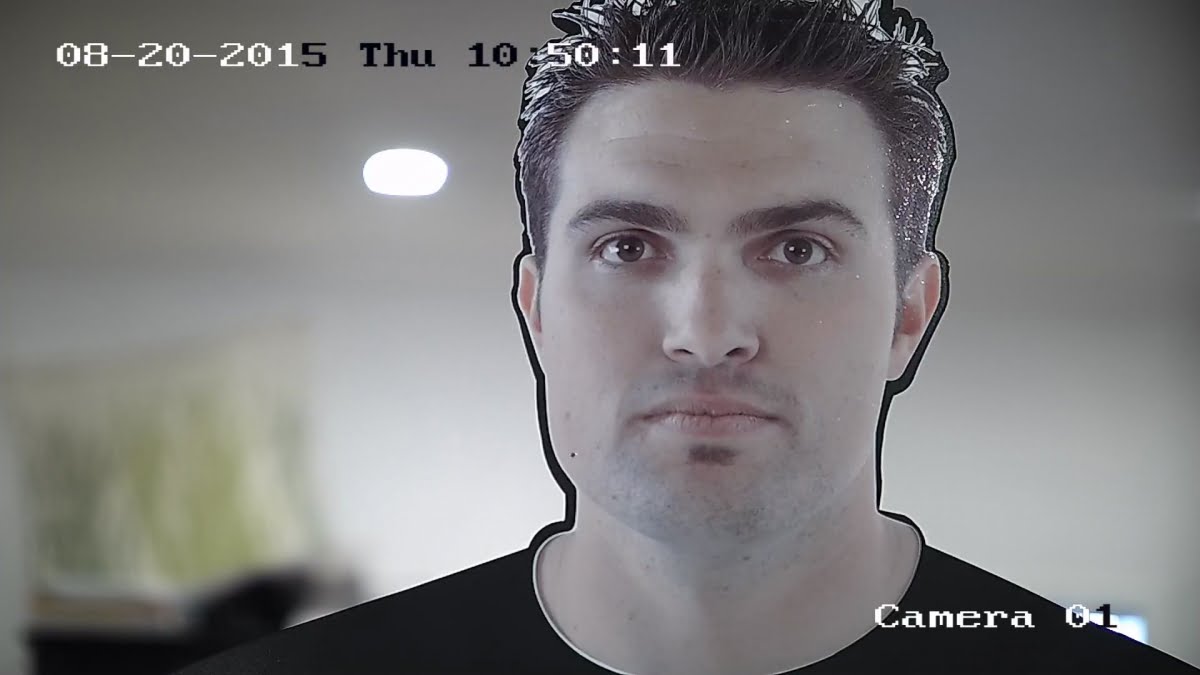
Hikvision DarkEye SLA-When I activate WDR I immediately see how good it is and why it was I preferred to do my night shots without it. WDR puts work on the image and this digital translation changes colour rendition – it’s the same with every camera. However, against very strong backlight like the 75,000 lux exploding around Norman’s head, Darkfighter and Darkeye with its scorchingly fast f0.95 constant aperture, are really walking the walk. I take a shot of Norman in the doorway backed with full sun and it’s an excellent image.
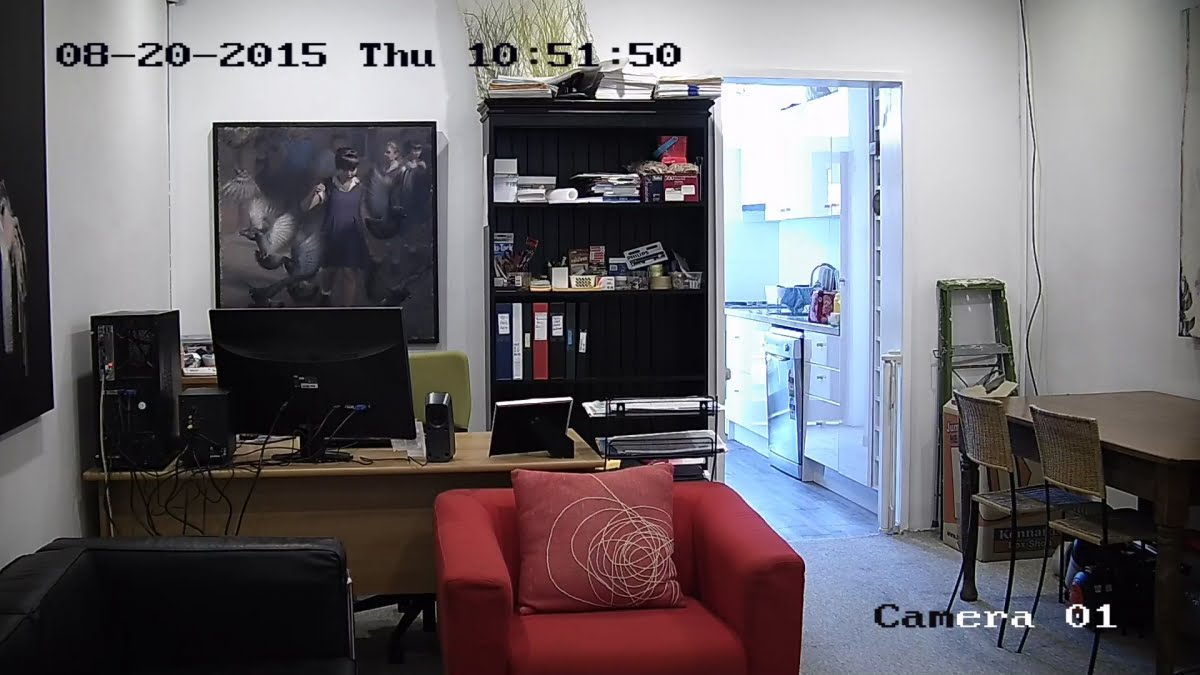
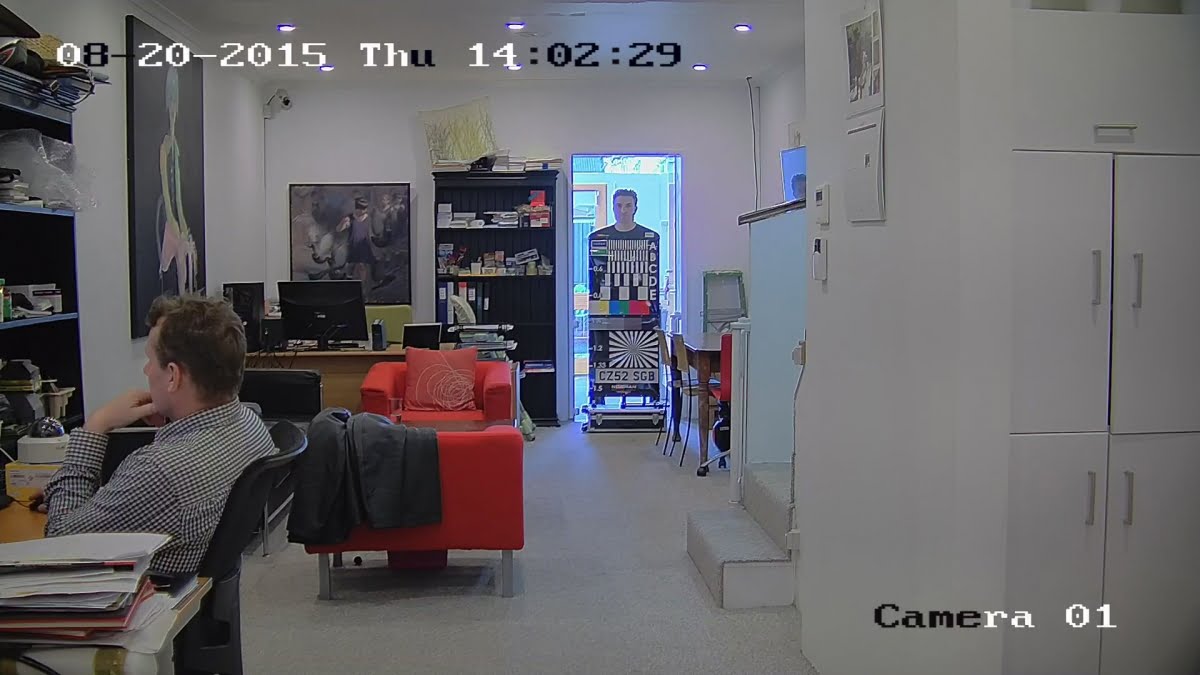
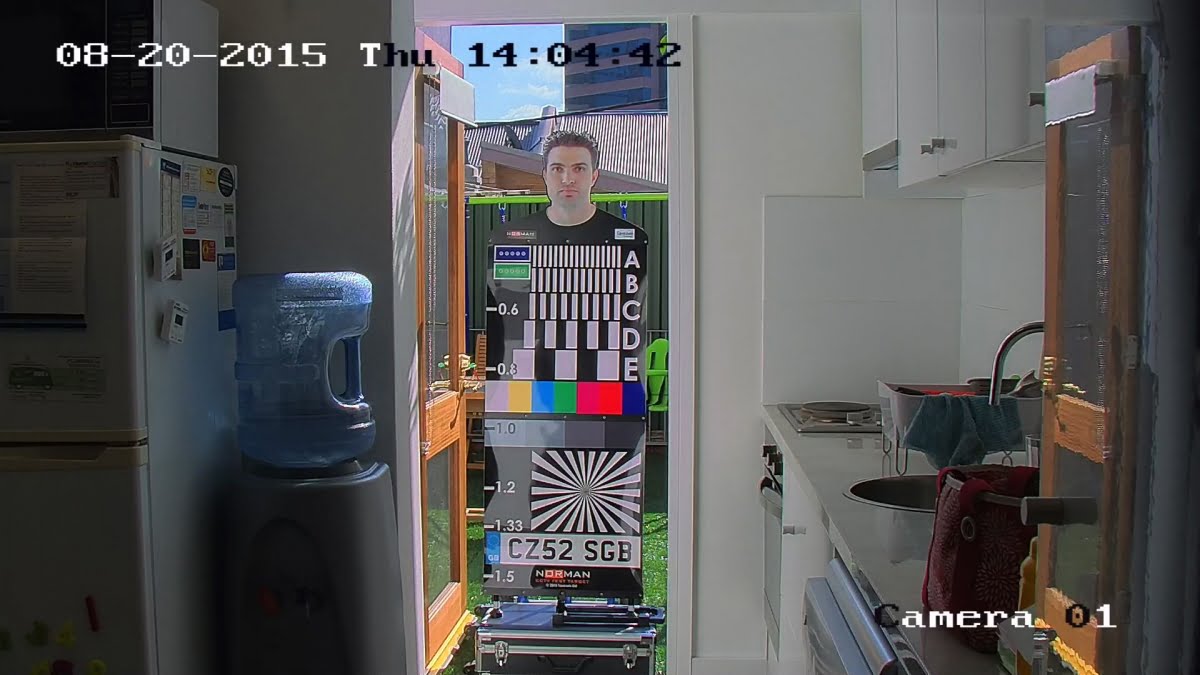
Hikvision DarkEye SLA Lens-I quickly find that pointing this lens at a scene including the sun does not give best colour performance but when targeting the lane, colour is great – a little warm, but there’s excellent detail deep into the scene that contrives to give that spatial sense to my images. Colours are not as true as they are with WDR off but the camera is now able to handle extremes of backlight in a range of applications. Again I notice the lack of motion blur, which is an important strength of any ID camera.
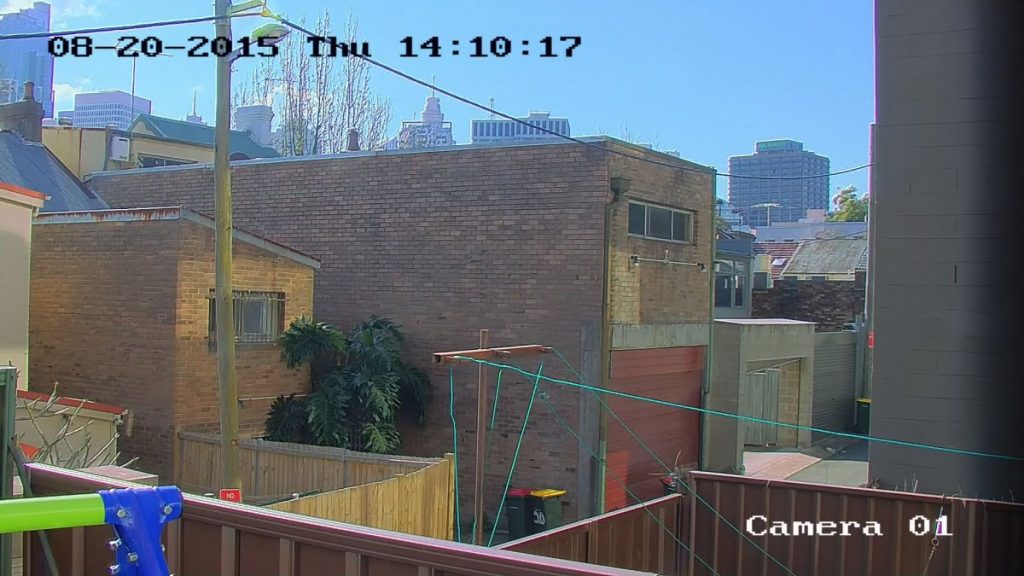
Conclusion
We already knew Darkfighter was a great camera. The addition of Darkeye really does make a difference – it makes Darkfighter the best unassisted low light camera we’ve tested so far. Something Darkeye also does is highlight the fact that quality lenses work. They increase sharpness, improve colour rendition and in the case of this very fast lens, they take low light performance to another level. If you need low light performance above everything else, the combination of Hikvision Darkeye and Darkfighter is a winner. ♦
You can read more about Hikvision cameras here and see more SEN news here
By John Adams




